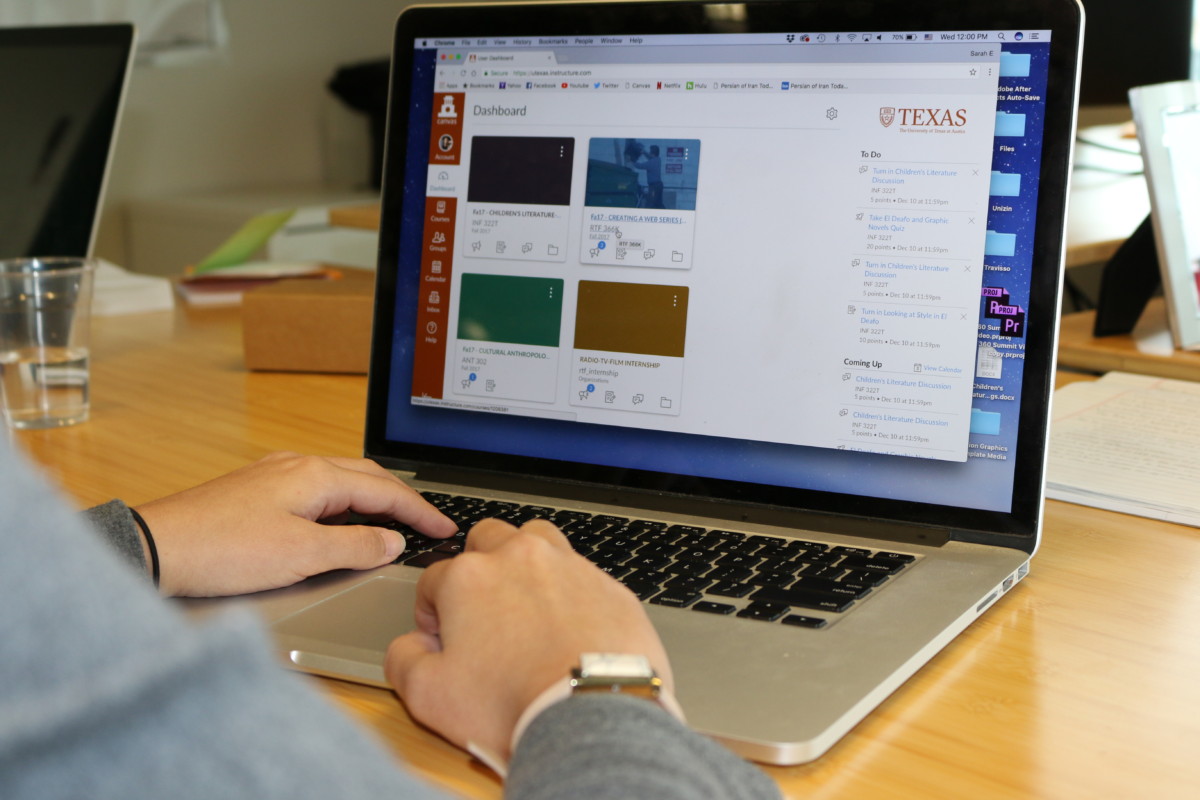Written by Unizin’s Fall 2017 video production intern Sarah Nouri.
The creation and distribution of video content plays a key role in expanding and improving the way learners can access information. As a senior in college, I have witnessed a shift in the way the overall learning ecosystem operates, mainly with a growing reliance upon diverse types of video content to serve digital learners.
When I first started as a freshman at The University of Texas at Austin in 2014, the campus had not yet completed its LMS migration from Blackboard to Canvas. When the transition to Canvas was finished, I noticed that web-based courses seemed to become more comprehensive than they were before, especially with the addition of modules to organize courses and a change in the format of video lectures to match or exceed the quality of in-person lectures.
Not long ago, relying on a digital space to teach a class seemed like a hindrance. I took one online class my freshman year that consisted of a few online tests and long lectures every week. It felt as if the professor was teaching a normal class, and someone just happened to film him. Lectures lasted 50-75 minutes, a standard class period, and online learners could even see the same lecture slides as the in-person class. The only benefit we had over an in-person lecture was the ability to re-watch the videos to get any information we missed the first time. Alternatively, the down side was that without the ability to ask questions, it was easy to get lost in such a long lecture. The subject matter wasn’t taught in a very interesting way, and without the atmosphere of a classroom to keep students focused, it was very easy to become distracted. From what I remember, the class wasn’t organized into modules; students had to check the syllabus and sort through files to find the assigned readings and activities for that week. This was time-consuming and frustrating for students.
Fast forward three years later, and the delivery of content and interactivity between instructor and learner is very different. Online curriculum has become an integral part of the modern learning experience. I’m taking two online classes this semester: one is broadcast live from a classroom on campus at a set time, and the other has a pre-taped lecture with modules that each student needs to complete by the end of the week. Both include interactive activities like class chats and short quizzes to make sure students are paying attention and retaining information. The class with the weekly modules has pre-taped lectures that have yet to exceed 15 minutes each, yet they still convey all the necessary information students need to know for that section. The content is presented simply and directly without any unnecessary explanation. If students seek individual help, they can go to a professor or teaching assistant’s office hours or correspond via email to get clarification one-on-one. To me, these changes that have been made from the physical space to the online space are a lot more convenient for both instructors and learners.
Another incredibly effective aspect of the inclusion of more video content is the fact that video can now be embedded in the LMS itself. Whereas lectures from my first online class were posted on an external site like YouTube or Vimeo, the videos we need for class are now accessible through Canvas. Students don’t have to click a link and be taken to a different site to view a video; they can simply click the play button and remain on the Canvas website. This has likely improved students’ focus, considering when they’re taken to an external site such as YouTube, it’s incredibly easy to get distracted by non-academic videos. Now, online courses are self-contained within the LMS that students have become familiar with. They know where to go if they need to access the syllabus, post on a discussion thread, email their professor, and find video lectures and course materials. I can’t remember the last time I had to look at a paper print-out copy of a syllabus or even ask a classmate for information I didn’t know; it’s all right there in Canvas.
It’s clear that integrating all course materials in the LMS has really improved access for students, and that’s especially true for video lectures. Having course materials presented in video format allows learners to go back and review the material they missed the first time, improving study techniques. All the content is right there, and with different playback speeds and closed captioning built in, it’s easily accessible for all learners.
Online classes have been streamlined to feature the most important information in an accessible and flexible format. While one may get more information presented to them in a lecture setting, online learning is all about hitting the key points and making sure that information is retained well. It’s my guess that in the next few years we’ll be seeing an even greater shift to well-organized, digitally-taught classes based around video lectures.

